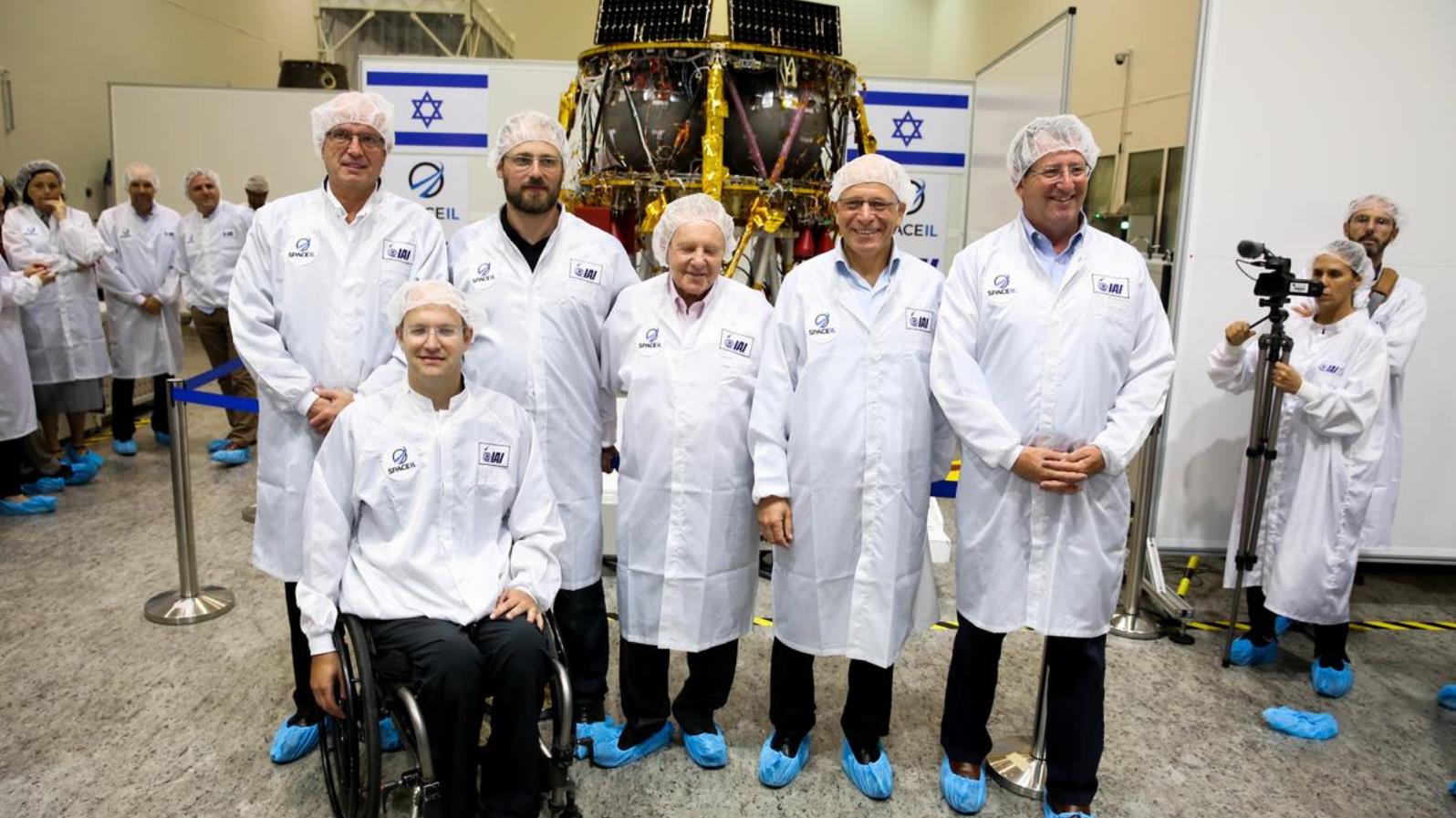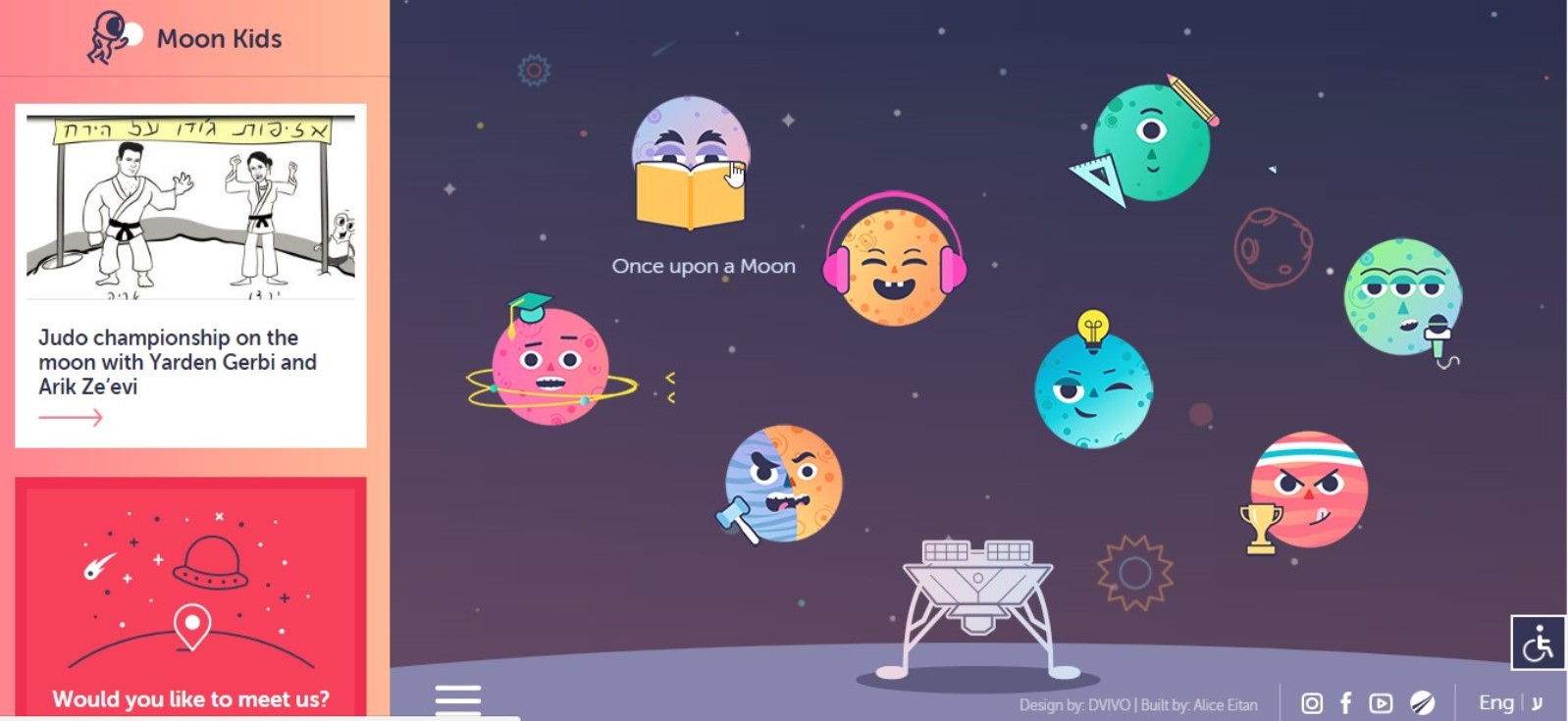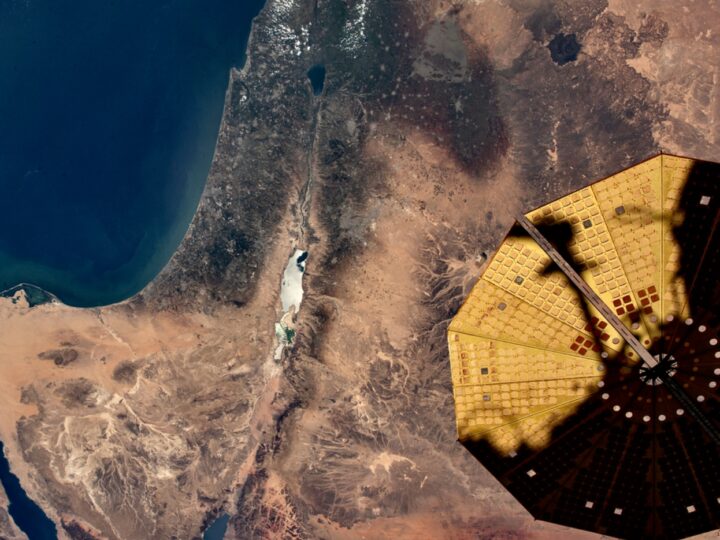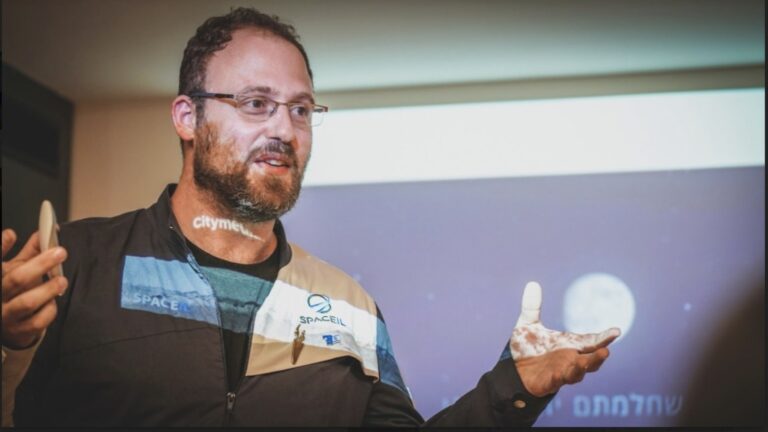Determined to continue its race to the moon despite the expiration of the $20 million Google Lunar XPRIZE competition last March, Israel’s nonprofit SpaceIL announced plans to launch its unmanned module on a SpaceX Falcon 9 rocket from Cape Canaveral in Florida in mid-December.
If the module reaches the moon as expected on February 13, 2019, it will make history as the smallest and first privately funded unmanned spacecraft to land on the moon.
“Our mission was never about winning the prize money – although $20 million would have been nice,” said SpaceIL CEO Ido Anteby. “It’s about showing the next generation that anything is possible – that even our small country can push the limits of imagination.”
On July 10, SpaceIL gave the press its first look inside the Israel Aerospace Industries (IAI) MABAT Space facility in Yehud near Israel’s airport, where the nonprofit organization has been collaborating with IAI for eight years to build the 1,322-pound (600-kilogram) spacecraft.
Until now, only three world superpowers — the United States, Russia, and China — have achieved controlled lunar landings.
Lacking the resources of those superpowers, SpaceIL turned to private donors to fund the project. SpaceIL was the first of 16 Google Lunar XPRIZE competitors to sign a launch contract and one of only five teams to reach the finals.
Approximately $88 million was invested in the spacecraft’s development and construction. SpaceIL President Morris Kahn has donated about $27 million to the effort and decided to proceed even after the contest deadline passed and effectively ended without any finalists achieving the goal.
“After eight challenging years, I am filled with pride that the first Israeli spacecraft, which is in its final construction and testing phases, will soon be making its way to the moon,” said Kahn. “I have experienced numerous challenges in my life, but this was the greatest challenge of all.”
Kahn said the lunar launch “will fill Israel, in its 70th year, with pride. It is a national accomplishment that will put us on the world’s space map.”

The craft and the journey
The spacecraft’s design and development process began in 2013, two years after Yariv Bash, Kfir Damari and Yonatan Winetraub founded SpaceIL and registered for the Google Lunar XPRIZE competition. Construction began at the IAI MABAT Plant last year.
In the coming months, the Israeli spacecraft will undergo intensive checks and tests at IAI to prove that it can withstand the launch, flight and landing conditions, said Anteby.
The dimensions of the spacecraft are 1.5 meters (4.9 feet) high and 2 meters (6.5 feet) in diameter. The fuel it will carry will comprise some 75 percent of its total 600kg weight. Its maximum speed will reach more than 10 kilometers per second (36,000 kilometers, or nearly 22,370 miles, per hour).
Anteby said the SpaceIL craft – bearing an Israeli flag — will disengage from the launch rocket at an altitude of 60,000 kilometers (37,282 miles) and will begin orbiting Earth in elliptical orbits. Upon receipt of a command from the control room, the spacecraft will enter a higher-altitude elliptical orbit around Earth, which will reach a point near the moon.
At this point, it will ignite its engines and reduce its speed to allow the moon’s gravity to capture it. It will then begin orbiting the moon, until the appropriate time to begin the landing process. This process will be executed autonomously by the spacecraft’s navigation control system.
The entire journey, from launch to landing, will last approximately two months.
SpaceIL’s module is to take photos and video of the landing site and measure the moon’s magnetic field as part of a scientific experiment designed by Weizmann Institute researchers. The data will be transmitted to the IAI control room during the two days following the landing.
The program has always had STEM education as a secondary goal, aiming to encourage Israeli children to choose to study science, technology, engineering and mathematics. With the help of a broad network of volunteers, SpaceIL has already made presentations to about 900,000 children nationwide.
For children from any country, SpaceIL introduced its Moon Kids website in English, chock full of fun interactive content about the moon and outer space.

IAI has been a full partner in the project from its inception. Over the years, additional partners from the private sector, government companies and academia have joined, including Weizmann Institute of Science; Israel Space Agency; the Ministry of Science, Technology and Space; Bezeq and others.
IAI CEO Josef Weiss said he regards the launch of the first Israeli spacecraft to the moon as an example of the amazing capabilities once can reach in civilian space activity.
“The State of Israel, which is already firmly planted in the realm of space in its military activity, must harness resources for the benefit of civilian space, which is an engine of innovation, technology, education and groundbreaking around the world,” said Weiss.
For more information about SpaceIL, click here.
















